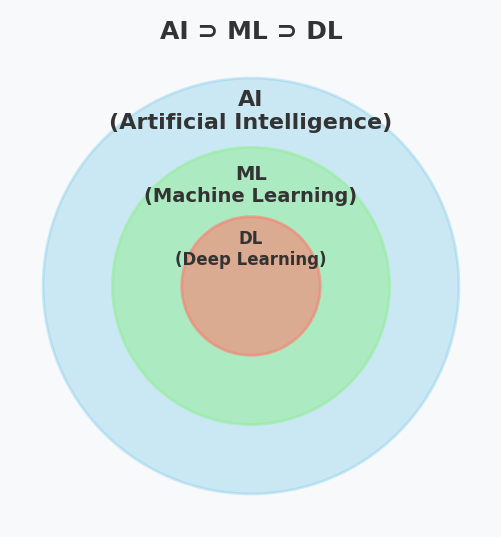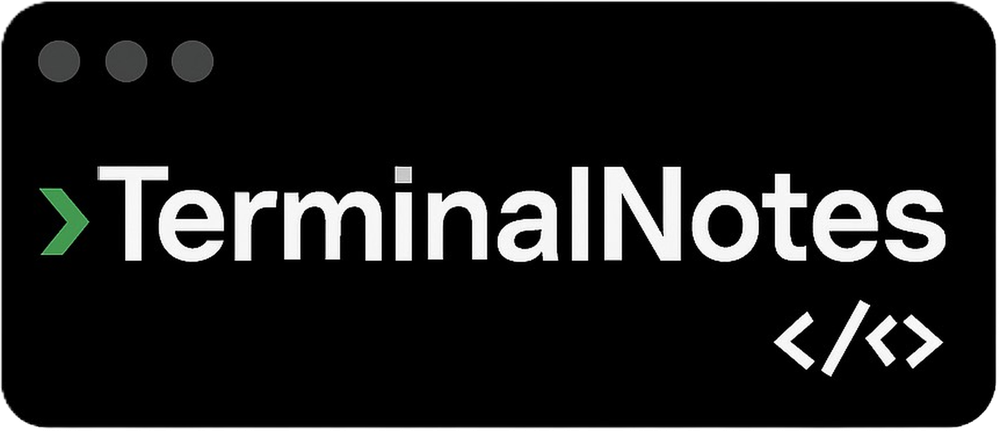Sharing notes from my ongoing learning journey — what I build, break and understand along the way.
AI vs ML vs DL: Understanding the Key Differences with Real-Life Examples
AI, ML, and DL Explained Simply: What They Are and How They Connect
If you’re into technology, chances are you’ve seen these three acronyms a lot: AI, ML, and DL. They pop up in conferences, LinkedIn posts, and even when people talk about Netflix recommendations. But for many, there’s still some confusion: Are they the same thing? Or completely different?
In this article, we’ll break down what each of them really means, how they connect to one another, and why understanding the difference actually matters.
Artificial Intelligence (AI): The Big Umbrella
AI, or Artificial Intelligence, is the broadest concept here. When researchers first talked about AI in the 1950s, they dreamed of machines that could “think like humans.” That might sound dramatic, but at its core, AI simply means getting machines to do tasks that normally require human intelligence.
Examples are everywhere:
- A chess program beating a grandmaster,
- Spam filters keeping your inbox clean,
- Google Translate,
- Virtual assistants like Siri or Alexa.
All of these are AI, but they don’t all learn the same way. And that’s where Machine Learning comes in.
Machine Learning (ML): Learning from Data
ML, or Machine Learning, is one of the most popular subfields of AI. Instead of hard-coding rules like “if this happens, do that,” we let computers learn patterns from data.
Think of teaching a child to tell cats from dogs. You don’t explain every detail; you show them lots of pictures. After enough examples, the child figures it out. ML works the same way: feed the system enough data, and it learns to make predictions.
There are three main approaches:
- Supervised learning – learning from labeled data (e.g., spam vs. not spam).
- Unsupervised learning – finding hidden patterns in unlabeled data (e.g., grouping customers by behavior).
- Reinforcement learning – learning through trial and error (e.g., an AI agent learning to play chess or Mario).
Today, when Netflix recommends a movie or Spotify suggests a playlist, that’s ML in action. But as tasks get more complex, ML needs extra horsepower—and that’s where Deep Learning steps up.
Deep Learning (DL): Power of Neural Networks
DL, or Deep Learning, is a specialized branch of ML that uses artificial neural networks, inspired by the human brain.
What makes DL special?
- It can automatically extract features from data.
- It scales well with massive datasets.
- With GPUs, it can handle millions of parameters simultaneously.
For example, imagine building a system to recognize a cat in a photo:
- The first layer might detect simple lines,
- The next layer picks out ears,
- Another layer recognizes eyes,
- Finally, the system decides: yep, that’s a cat.
This layered learning makes DL perfect for today’s big breakthroughs:
- Self-driving cars,
- Face recognition,
- Advanced translation systems,
- ChatGPT and other large language models.
Deep Learning really took off in the last decade thanks to “big data” and powerful hardware. Without those, much of what we use daily today would’ve remained science fiction.
AI – ML – DL: How They Relate
The easiest way to picture it is as three nested circles:
- The largest circle: AI – the general concept of machines being “smart.”
- Inside that: ML – one way to achieve AI, by learning from data.
- Inside ML: DL – a more advanced way, using layered neural networks.

Formula:
DL ⊂ ML ⊂ AI
Put simply:
- Every DL is ML.
- Every ML is AI.
- But not every AI is ML.
For instance, an old chess program with hardcoded rules is still AI, but not ML—because it doesn’t learn.
Why People Mix Them Up
Right now, most of the headlines are about DL—ChatGPT, DALL·E, autonomous cars, image recognition, you name it. So naturally, people tend to equate AI with DL. But the truth is, even a simple decision tree or rule-based system counts as AI.
Marketing doesn’t help either: companies like to say “we use AI” because it sounds more exciting, even if what they’re doing is plain ML.
Everyday Examples
- AI: Your fridge beeps when the door is left open → simple intelligence.
- ML: Netflix recommends a movie because you liked similar ones → data-driven learning.
- DL: Google Photos automatically groups pictures of your friends → neural networks at work.
Why Understanding the Difference Matters
Knowing the difference between AI, ML, and DL isn’t just about theory—it helps you understand what’s truly groundbreaking versus what’s just automation dressed up as “AI.”
And for me personally, this isn’t just abstract knowledge. I’m learning these concepts step by step because I have my own idea I’d like to explore one day: an AI system that classifies patents. Imagine filing a new patent—this system would instantly compare it against existing ones, highlight overlaps, and quickly suggest whether the new entry is valid or not.
That’s the kind of project I’d love to build eventually, and understanding AI, ML, and DL is part of the journey. Each concept I learn feels like another piece of the puzzle falling into place.
